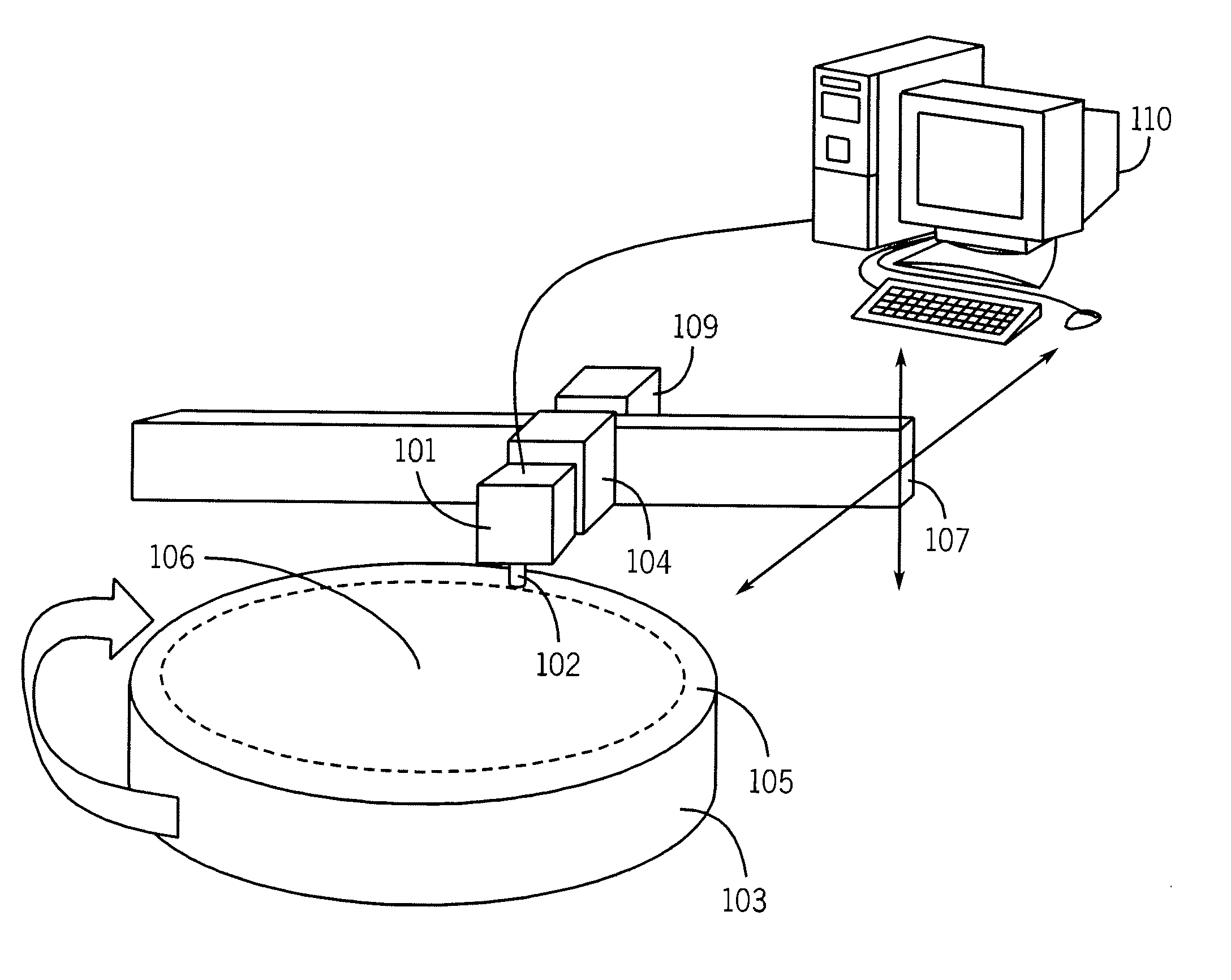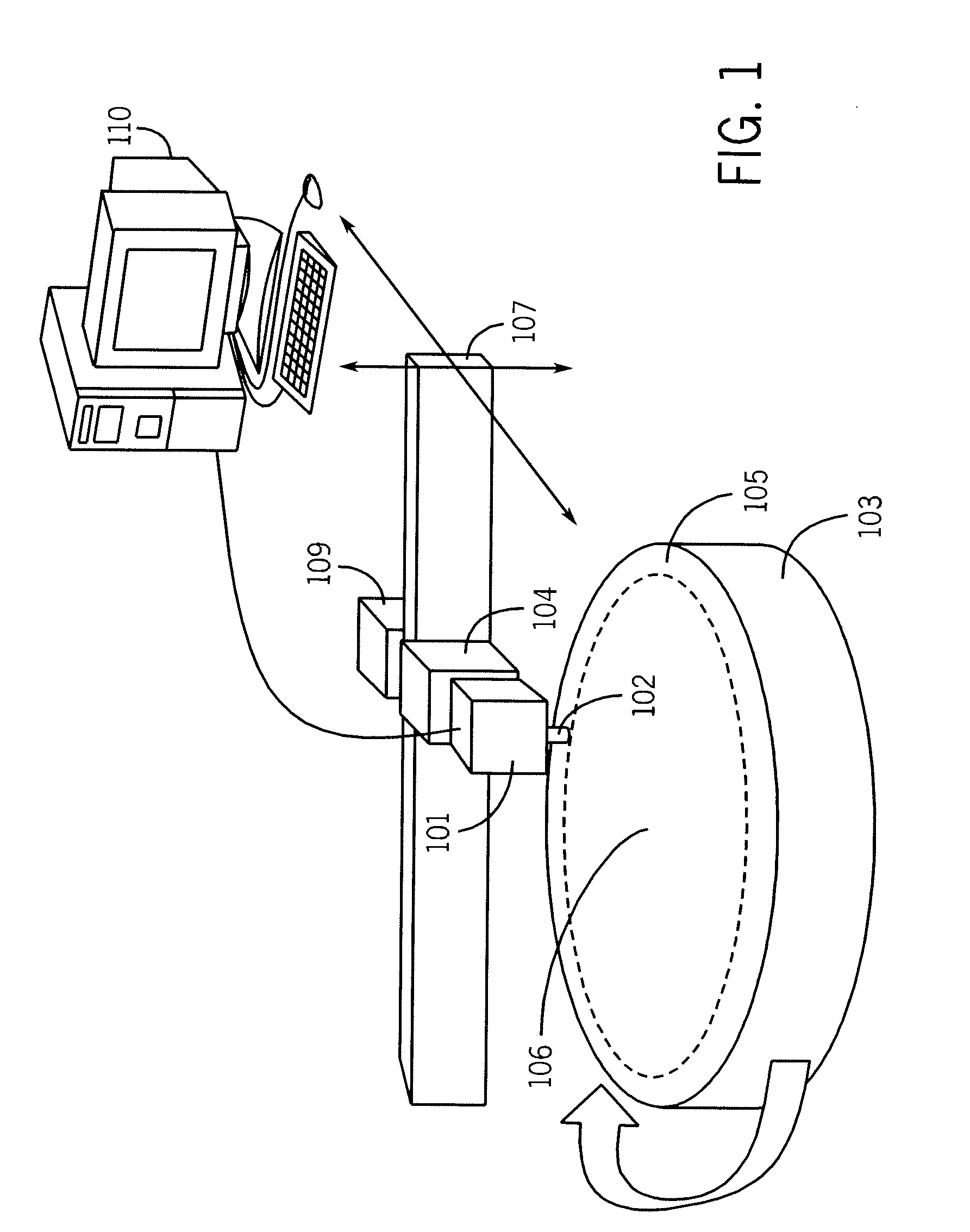Calibration of non-vibrating contact potential difference measurements to detect surface variations that are perpendicular to the direction of sensor motion
- Summary
- Abstract
- Description
- Claims
- Application Information
AI Technical Summary
Benefits of technology
Problems solved by technology
Method used
Image
Examples
Embodiment Construction
[0051]In accordance with one preferred embodiment, a radial scanning apparatus 100 is shown in FIG. 1. The apparatus 100 consists of a contact potential difference sensor 101, a system 103 for mechanically fixturing wafer 105 and spinning the wafer 105 to generate relative motion between probe tip 102 and wafer surface 106 such that the probe tip 102 moves parallel to the wafer surface 106, a system 107 for positioning the sensor 101 a fixed distance above the wafer surface 106, a system 104 for vibrating the probe tip perpendicular to the wafer surface, and a system 110 for acquiring and processing the output signal from the sensor 101 to identify and classify wafer 105 non-uniformities. In this preferred embodiment, the contact potential difference sensor 101 can be operated as a non-vibrating contact potential difference sensor to scan the wafer surface 106 and generate data on changes in contact potential difference across the wafer surface 106, or as a vibrating contact potenti...
PUM
 Login to View More
Login to View More Abstract
Description
Claims
Application Information
 Login to View More
Login to View More - R&D
- Intellectual Property
- Life Sciences
- Materials
- Tech Scout
- Unparalleled Data Quality
- Higher Quality Content
- 60% Fewer Hallucinations
Browse by: Latest US Patents, China's latest patents, Technical Efficacy Thesaurus, Application Domain, Technology Topic, Popular Technical Reports.
© 2025 PatSnap. All rights reserved.Legal|Privacy policy|Modern Slavery Act Transparency Statement|Sitemap|About US| Contact US: help@patsnap.com



